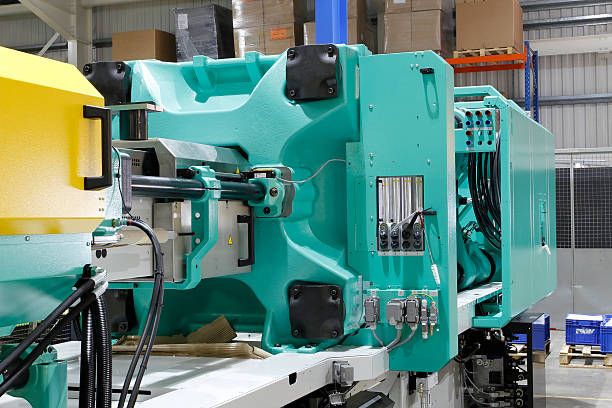Unlock your product's potential with our One-stop solutions!
+86-755-83222882

GET QUOTE
What is the Best Material for Overmolding?
In the world of manufacturing, particularly in injection molding, overmolding stands out as a versatile and crucial process. Choosing the best material for overmolding can significantly impact the quality, durability, and functionality of the final product. This article explores the intricacies of overmolding, the materials commonly used, and why selecting the right material is essential for successful injection molding projects.
Understanding Overmolding
What is Overmolding?
Overmolding is a manufacturing process where one material is molded over another. This technique is widely used to enhance product functionality, provide ergonomic features, or improve aesthetics. The process typically involves two stages: the creation of a substrate (usually a rigid plastic or metal) and the application of an overmold material (often a softer, more flexible polymer) on top of it.
Why Use Overmolding?
Overmolding offers several advantages, including improved grip, enhanced product durability, and the ability to combine multiple materials to achieve desired characteristics. For instance, a tool handle might have a hard plastic core for strength and a soft rubber exterior for comfort. This combination enhances the user experience and extends the product's lifespan.
Injection Molding and Overmolding
The Role of Injection Molding in Overmolding
Injection molding is the process used to create the initial part, or substrate, in overmolding. This technique involves injecting molten material into a mold to form a specific shape. Once the substrate is created, the overmolding process can begin, where the second material is applied to the substrate.
Materials Used in Injection Molding
The choice of material for injection molding is critical as it forms the base for overmolding. Common materials used for injection molding substrates include Acrylonitrile Butadiene Styrene (ABS), known for its toughness and impact resistance; Polycarbonate (PC), which offers high strength and is often used in applications requiring transparency; and Polypropylene (PP), valued for its chemical resistance and versatility.
The Best Materials for Overmolding
Key Considerations for Overmolding Materials
Selecting the best material for overmolding depends on several factors, including compatibility, application requirements, and aesthetics and ergonomics. The overmold material must adhere well to the substrate, meet the final product's intended use requirements (such as flexibility, durability, and resistance to elements), and enhance the look and feel of the product.
Common Overmolding Materials
Thermoplastic Elastomers (TPEs) are among the most popular materials for overmolding. They combine the properties of rubber with the processability of plastics and are known for their flexibility, durability, and ease of use in the overmolding process. Liquid Silicone Rubber (LSR) is another excellent choice for overmolding, especially in applications requiring high temperature resistance and flexibility. LSR is commonly used in medical devices, automotive parts, and consumer products. Thermoplastic Polyurethane (TPU) offers a unique combination of elasticity, transparency, and resistance to oil and abrasion, making it ideal for applications requiring a robust yet flexible overmold.
The Overmolding Process
Step-by-Step Guide to Overmolding
The first step in the overmolding process involves designing the base part that will be overmolded. This includes considering factors such as shape, material, and functionality. Next, the substrate is created through the injection molding process using the chosen material. The substrate is then prepared for the overmolding process, which may include cleaning or applying a primer to ensure good adhesion. The overmold material is then injected over the substrate, with the mold design allowing for proper flow and filling of the overmold material. Finally, after the overmold material has been applied, the part is cooled and ejected from the mold.
Ensuring Success in Overmolding
To ensure the best results in overmolding, it is essential to test the compatibility of the substrate and overmold materials, design the mold to accommodate both materials, and maintain precise control over the injection molding and overmolding processes to avoid defects.
Applications of Overmolding
Consumer Products
Overmolding is widely used in consumer products to enhance aesthetics and functionality. Examples include toothbrushes with rubber grips, electronic device cases, and kitchen utensils.
Medical Devices
In the medical field, overmolding is used to create products that require a combination of durability and comfort. Medical devices, surgical instruments, and prosthetics often use overmolding to provide a soft touch and improve usability.
Automotive Parts
Overmolding in the automotive industry helps in creating parts that are both durable and comfortable. Applications include handles, buttons, and interior components that require a soft touch and resistance to wear and tear.
Conclusion
Choosing the best material for overmolding is a critical decision that impacts the functionality, durability, and aesthetics of the final product. Whether it's thermoplastic elastomers, liquid silicone rubber, or thermoplastic polyurethane, each material offers unique benefits suited to specific applications. Understanding the intricacies of overmolding and injection molding processes, along with careful material selection, can lead to the creation of superior products.
To achieve outstanding results in your overmolding projects, partnering with an experienced and knowledgeable manufacturer is essential. For businesses seeking reliable plastic injection molding services, SZOMK stands out as a trusted partner. Specializing in both injection molding and overmolding, SZOMK provides expert guidance on material selection, mold design, and process control. With SZOMK, you can ensure that your products not only meet but exceed industry standards for quality and performance. Whether you are in the consumer goods, medical, or automotive industry, trust SZOMK to deliver the expertise and capabilities needed to enhance your products' performance and appeal.


